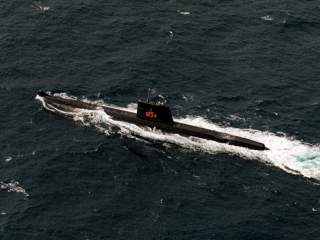China and Pakistan Join Forces Under the Sea
Islamabad has often been touted by Beijing as its foremost “all-weather friend.”
Indeed, recent PN procurement decisions mostly favored Beijing as a reflection of balancing operational needs and budgetary constraints. For instance, PN plans to procure modified Jiangkai frigates, continues to build the Azmat class missile fast attack craft using Chinese technologies, and in October 2015 inking a deal to build four S-20 (Type-039A Yuan class export variant, without AIP) in China and the other four in Pakistan. Even before negotiations began in earnest from 2011, Islamabad has cultivated the “Sino card”, for example incorporating submarine technology transfer into an agreement signed with Beijing in April 2007.
Therefore, in the foreseeable future, one may observe the gradual “Sinicization” of PN’s undersea strategy. This includes the procurement of more and more Chinese hardware that will soon supplant the existing Western makes, including submarines. But that is not all; PN appears also keen to adapt the PLA Navy’s undersea operational concepts. The latest Sino-Pakistani naval exercise exemplifies this evolving, holistic PN strategy towards addressing the undersea challenge. This inaugural joint ASW training component should be expected to continue in subsequent exercises. In fact, PLA Navy’s regular stopovers in Karachi and most recently in Gwadar have included submarines in the recent years. These boats were not just intended as technological showpieces to Islamabad but more practically, to hone interoperability with PN in the undersea arena, getting acquainted with the local operating environment, and most likely tracking and conducting mock attack runs on Indian naval targets, especially submarines. In times of war, this will pay off as the two navies jointly prosecute such missions against conceivably Indian submarines, leveraging on the growing bilateral interoperability and technological commonalities.
It is clear that Pakistan looks forward to a multifaceted format of naval cooperation with China, which will thereby institutionalize the process of building interoperability and technical commonalities. During an interview with Beijing Review in March 2013, Rear Admiral Khan Hasham Bin Saddique, Commander Pakistan Fleet called for a bilateral memorandum covering not just naval exchanges but also training and exercises, as well as shipbuilding, which includes submarine technical cooperation. With the latest joint ASW training, Beijing has answered part of this call. It will become a matter of time that the Sino-Pakistani naval nexus gains greater traction in the undersea arena.
Koh Swee Lean Collin is associate research fellow at the Institute of Defence and Strategic Studies, a constituent unit of the S. Rajaratnam School of International Studies based in Nanyang Technological University, Singapore.
Image: Wikimedia Commons/U.S. Navy

